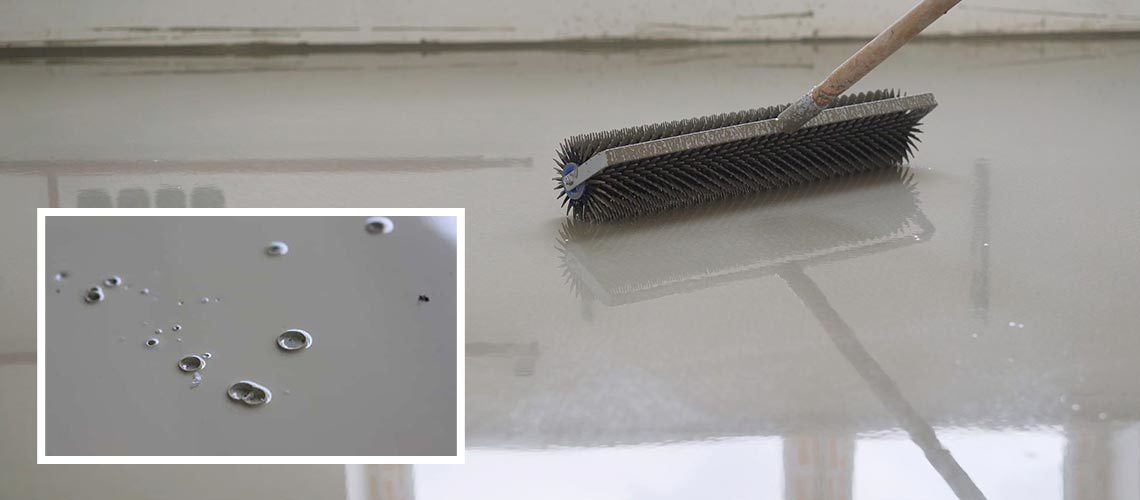Why Do I Have Bubbles in My Epoxy Floor?
Here are the 5 MOST COMMON REASONS for bubbles in your epoxy flooring:
1. Carbonation
Simply put, this is the air that has been trapped underneath either a previous coating or a curing compound used to help the concrete cure without cracking. Concrete is a very porous building material. Once surface prep such as shot-blasting or diamond grinding is performed, the concrete actually exhales. When we apply the first coat immediately following the surface prep stage it is quite common to see small air bubbles. The solution to this is to sand the first coat and then re-apply a second coat. Using a primer as the first coat will also help with this.
2. Over Mixing of Materials
Most products are typically 2 component kits. These components need to be mixed together in order to achieve the hardness, chemical resistance and gloss the products are intended to produce. When applicators mix these products for longer than 3 minutes, and at higher than 350 rpm, these bubbles will occur. The solution is to make sure your applicator is familiar with the recommended mixing time for the products they are using. Use a proper mix blade, such as a “jiffy blade”, which is specifically designed to introduce less air into the mix.
3. Dry Rolling
This happens on almost every job. A roller cover like we are familiar with to paint are basically the same roller covers our customers will use. The difference is we are NOT painting, we are coating. A good common practice is to saturate the roller cover once the first mix is applied. This will fill the voids or the nap in the roller cover.
4. Temperature Variations
Typically when the material(s) to be applied are plus or minus 7 degrees Fahrenheit from the surface they are to be applied to, air bubbles will be created. Most polymer products create heat during the curing process. When cold materials are applied to warm substrates or vice versa there is a very good chance air bubbles will occur. The solution is to have materials stored pre-job in a climate-controlled environment prior to application.
5. Excessive Air Movement
This is probably the least common of the five reasons but we do see this typically in periods of extremely hot temperatures when plants use fans or air conditioning to keep the workspace comfortable. The same in deep periods of cold temperatures when heat sources are used.
Applying Thermal-Chem’s portfolio of high-performance concrete coatings can be difficult if the applicator is not well informed. Please check our Technical Data Sheets, or contact your Thermal-Chem representative for any questions.

